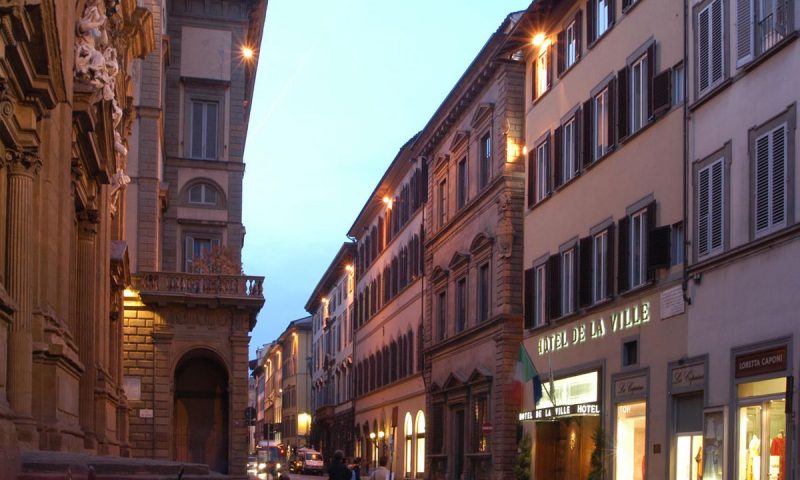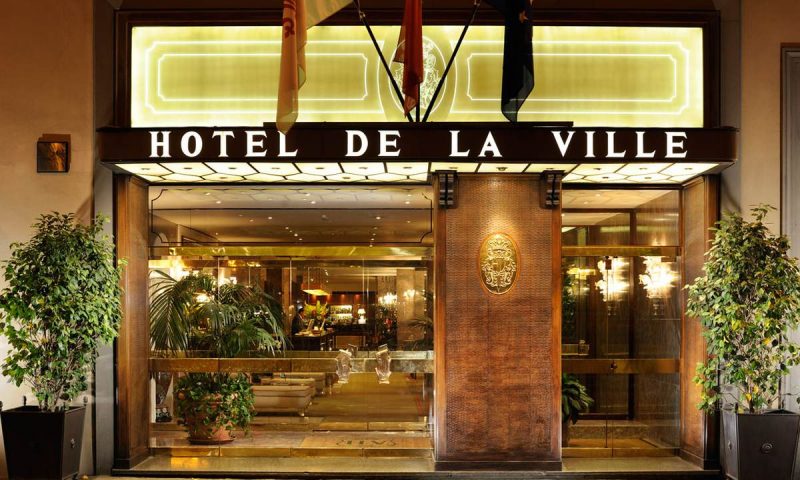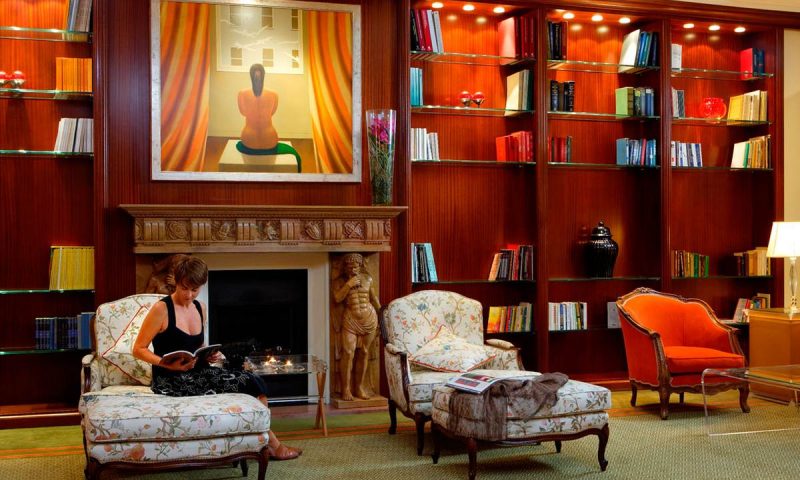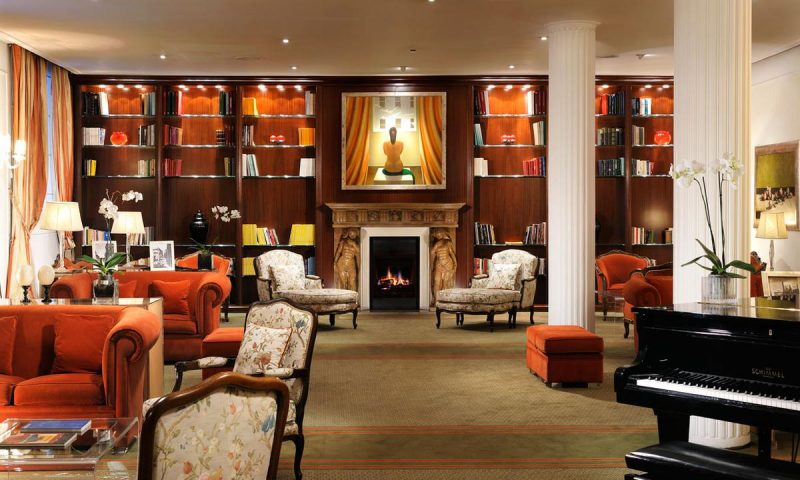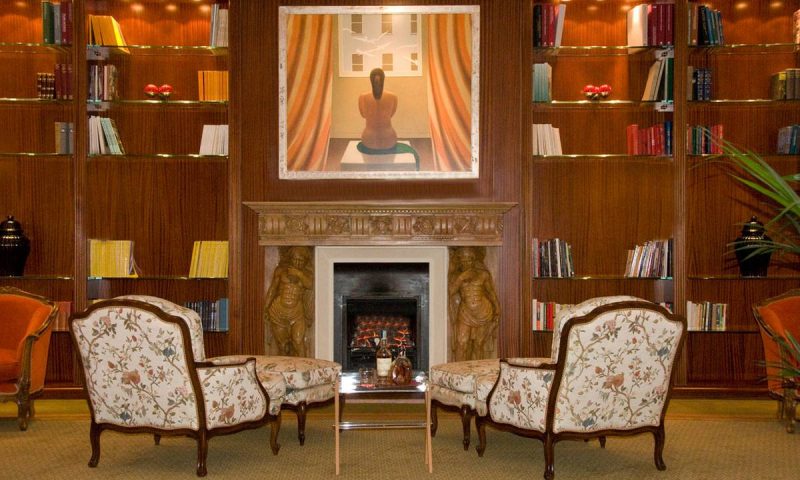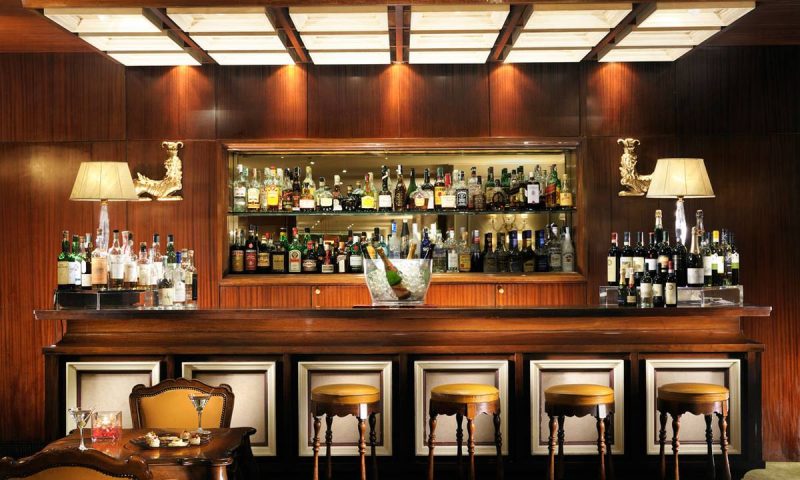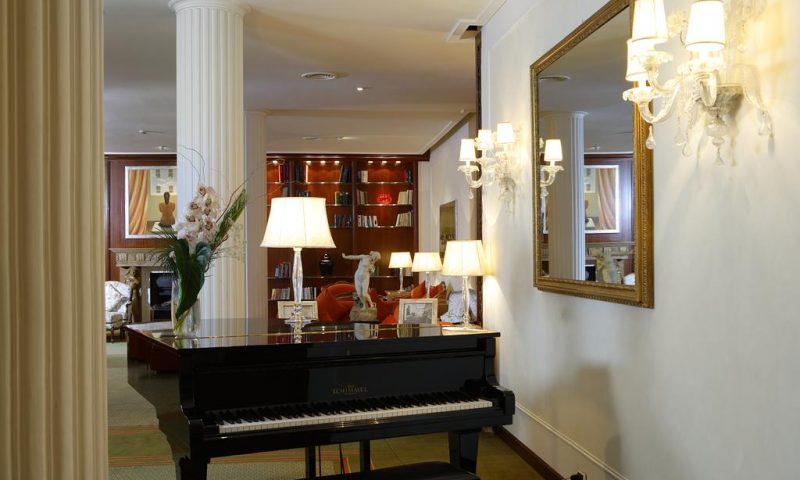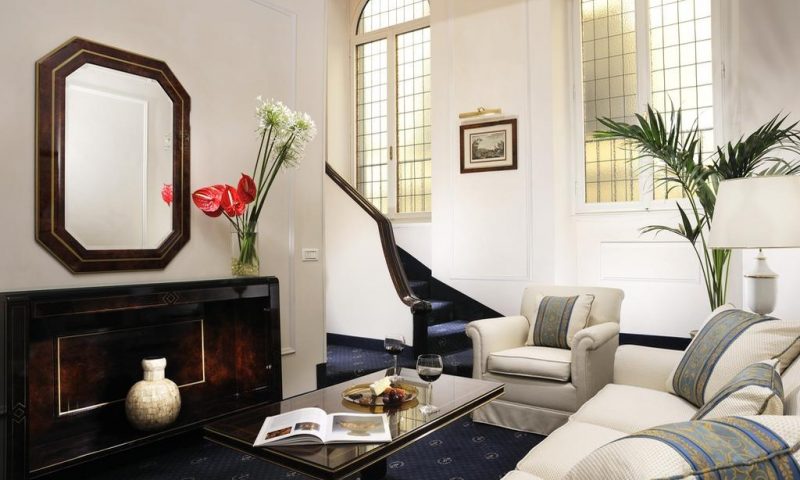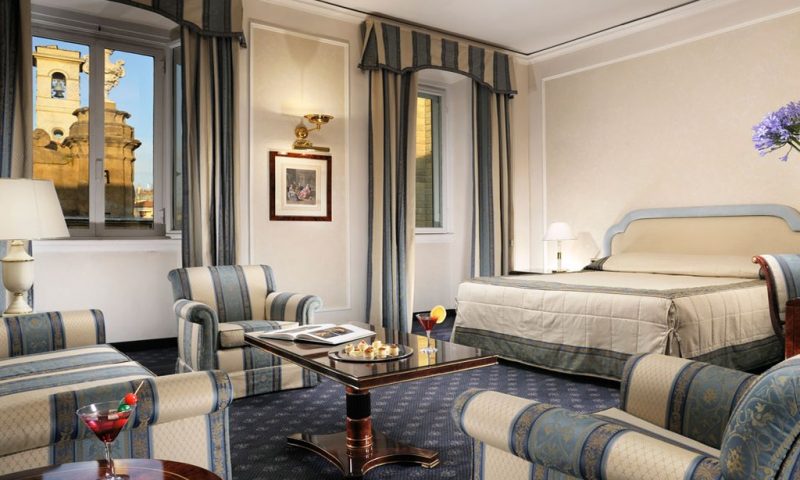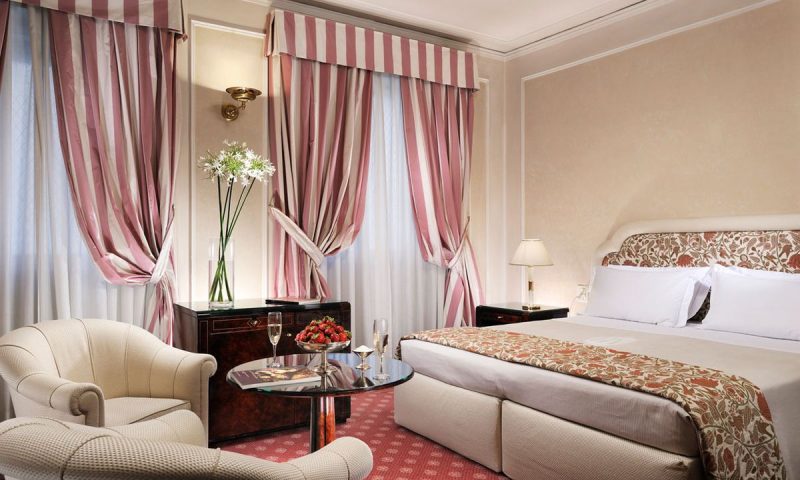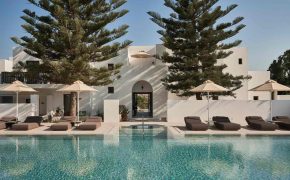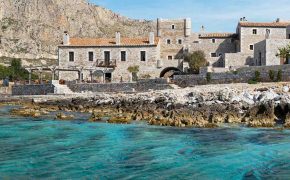Located in the most important street of the city, just became a pedestrian area but having its own direct access to the Hotel for the Guests coming by car. A gem of peace in the heart of Florence, it lies in the most prestigious town street named “Via Tornabuoni”.
Thanks also to its unique, central and prestigious position, the Hotel De La Ville offers stays at the sign of art, history and fashion because near it there are museums, monuments, buildings and the most prestigious boutiques but in the meantime characteristic and rich in Renaissance majestic buildings narrow streets.
The refined and luxurious Hotel De La Ville spaces offer the guests an elegant and sober ambience: its particular characteristic is in fact a detail care added by a class hospitality.
So the guests, after a good welcome in the hall with a staff at full disposal night and day, can relax in wide and pleasant areas furnished with precious materials and furniture at the sign of the style and the good taste. The well-distributed colours of the refined accessories give all the common places a pleasant and warm ambience.
From the commissionaire to the wide breakfast room, from the Lobby Bar to the meeting room, as far as the beautiful and spacious rooms furnished with refined accessories and provided with all the most modern comforts, the Hotel De La Ville radiates that indisputable refinement which identifies the famous Florentine style.
The Hotel De La Ville lies in the most old-world and central area of Florence, exactly in the most prestigious town street Via Tornabuoni, where there are the famous label boutiques, from Gucci to Prada’ s, from Cartier to Tiffany’s, from Hermes to Bulgari’s, etc.
The hotel is at the centre of the authentic town atmosphere, right in the middle of wonderful architectures (such as the cathedral, Basilica di San Lorenzo, Piazza della Signoria, the Uffizi and others) and the antique craft shops which do not seem changed in times.
A lots of characteristic delicatessens and trattorias make the area more fascinating also with their gastronomic Florentine tradition which allow to discover these authentic tastes so famous in the world.
SUITE DA VINCI
Da Vinci Suite has two separated rooms, each one with its own bathroom and its own entrance. The two rooms are connected by internal stairs. This suite is particularly suitable for four people. Each Da Vinci Suite is very spacious enriched with its unique stylish and wide window it’s also extremely bright.
Each suite is equipped with two flat-screen satellite television and pay tv, en suite bathroom with bathtub and shower and telephone.
SUITE DONATELLO
Donatello Suite has two separated rooms, each one with its own bathroom and its own entrance. The two rooms are connected by internal stairs with the living area on the first floor and the bedroom on the second floor.
Each Donatello Suite is very spacious and with its unique stylish and wide windows it’s also extremely bright. Each suite is equipped with two flat-screen satellite television and pay tv, en suite bathroom with bathtub, shower and telephone.
ROOMS
Very elegant rooms, furnished with charm and luxury, mark the Hotel De La Ville hospitality. Offering the possibility to choose among different typology rooms, it places at the guest disposal the solutions which satisfy even more the different space and comfort needs and also technology and modern services.
Every detail, from the refined upholsteries to the curtains, from the furniture on classic style to the tone of the accessory colours, is realized in order to offer the guests a pleasant stay in this wonderful charming hotel in Florence.
CLASSIC ROOM
The refined Florentine style, which has made the Hotel De La Ville famous as one of the most well-known historical hotel in Florence, characterizes the Classic Rooms.
With their indisputable charm, they are the ideal solution as twin or double rooms and their 16 square metres are a perfect synthesis of good taste and elegance. In every bedroom there is a bathroom with bath or shower and Smart LED television with satellite channels.
THE BREAKFAST ROOM
Every morning the Hotel De La Ville guests receive a special good morning in the very elegant and luminous breakfast room, where you can find an exclusive and tasty buffet.
With a pleasant background music the guests can relish in a large range of fresh fruit, fruit juices, yoghurt, grain, craft desserts and a choice of salami and cheese, instead from the chafing dish it is possible to taste eggs and bacon.
THE AMERICAN BAR
The refined and sober Lobby Bar environment is, with its hot furnishing and a pomegranate upholstery, the perfect place where you can relax tasting foods and drinks, staying comfortably in the hotel.
With a pleasant background music it is possible to taste drinks or hot and cold dishes prepared at the moment. It is also a perfect place for a happy hour and after dinner parties, where you can drink and at the same time taste nibbles, assorted pastries and various desserts.
THE CONCIERGE
The commissionaire service of the Hotel De La Ville is available night and day to satisfy every need and wish of the guests, such as for example the restaurant booking and advice or the entrance into the principal Florentine museums and art galleries.
Moreover you can buy air or railway tickets and reserve the transport service from and to the airport. This and much more at the guest disposal.
THE MEETING ROOM
The Hotel De La Ville is arranged to house workshops and small conferences. Provided with a refined Meeting Room, it is able to contain up to 50 people giving the opportunity to customize the seating arrangement for various meeting requirements.
In fact it is possible a theatre arrangement or for 30 people with an imperial or horseshoe table. The Room is provided with air conditioning, amplification system, microphones, direct telephone and other technical equipping on request.
THE DOME OF FLORENCE
Into the history of the Cathedral or Duomo of Florence have gone six centuries of work. The original project was designed by Arnolfo di Cambio at the end of the 13th century while the cupola, that is a symbol of Tuscany, was created by Filippo Brunelleschi, a renowned artist of the Renaissance period.
The facade however, that completed this magnificent work of architecture, was carried out as late as the 19th century. Enriching the history of this monument was a series of both exterior and interior interventions both decorative and structural.
The construction of two sacristies early on to the 16th century marble floors, from the execution of the sculptures to the frescoes signed by Paolo Uccello, Andrea del Castagno, Giorgio Vasari and Federico Zuccari (the Last Judgement in the cupola).
This Cathedral was the third and last to be built in Florence in 1412 and got the name Santa Maria del Fiore or “Holy Mary of the Flower” in allusion to the lily symbol of the city.
The Duomo was built on the top of Florence’s second Cathedral, Santa Reparata, when in 1293, the Florence Republic decided to replace this church with a larger and more magnificent cathedral and were also willing to fund its construction and therefore Santa Reparata was later demolished in 1375.
A large part of the remains of this church can be seen today in the archaeological area underneath the Cathedral. The costs however were also expected to be partly contributed by the population itself. A tax was put on all last wills and testaments which was in turn put towards the construction of the Cathedral.
In 1294 the project was ultimately assigned to Arnolfo di Cambio who laid ceremoniously the first stone on September 8th, 1296. Head Architect of the City Council, Arnolfo was already revolutionizing the Franciscan basilica of Santa Croce.
As well as the Baptistery, the diameter of the Dome was projected to be 45.5 meters. Arnolfo worked on the Cathedral up until his death in 1302, but four years earlier had already begun work on the construction of Palazzo Vecchio as well.
After the death of Arnolfo, the work grounded to a halt. In 1334 Giotto was called to oversee further construction but died shortly after in 1337. He dedicated most of this time to the building of his Bell Tower.
Work was then succeeded by Andrea Pisano, author of the South Doors of the Baptistery, up until 1348 when the terrible plague reduced the population in half from 90,000 to 45,000.
The Bell Tower was finally completed in 1359 after 10 years of work supervised by Francesco Talenti. In 1360 a new project was begun with the collaboration of Giovanni di Lapo Ghini.
The project saw the division of the centre nave into four square bays, with fewer windows than the original design by Arnolfo, and with two lateral bays. In 1375 Santa Reparata was taken down: which indicated that Santa Maria del Fiore was ready to be the new cathedral of Florence.
Many years later, when Grand Duke Francesco I de’ Medici decided to realize a new facade in 1586, the sculptures then found on the existing facade, some of Arnolfo himself, were dismantled and transferred to the Museum of the Opera inside the Duomo.
PIAZZA DELLA SIGNORIA
Piazza della Signoria has been the centre of Florentine politics since early in the republic’s history. It was in 1268 when the Guelph party, once again gained control and decided to take down the houses of their Florentine rivals the Ghibelline.
Upon the ruins of the 36 houses that were demolished, this famous “L” shape square became history. No other buildings were ever constructed to take their place and this is also why the buildings around the square are unaligned.
The square’s name actually derives from the Palace, designed by Arnolfo di Cambio in 1298, where the Republic government (called the “”Signoria””) resided.
The palace continued to maintain its political function in Florence during the reign of the Medici and later under Duke Cosimo I, who resided there between 1540 and 1565. It was during this time that Giorgio Vasari was commissioned to double the building in size.
Later when the Grand Duke and his family decided to move to the new Pitti Palace in 1565, Palazzo della Signoria began to be known as Palazzo Vecchio. Certainly it is not only the civil centre of Florence but one of the most visited open air attractions of the city, where the Uffizi and Loggia dei Lanzi can be found, containing numerous works of art.
A number of sculptures are on display under the elegant arches of the loggia which were erected for the public ceremonies of the Signoria. First, there are the six Roman statues against the wall in back representing heroines.
There is also the Rape of Polissena, a 19th century work by Pio Fedi and Hercules and the Centaur by Giambologna. To the sides of the Loggia there are two masterpieces: Perseus with the head of Medusa by Benvenuto Cellini and the Rape of the Sabines by Giambologna.
The statues in the square deserve an extra chapter. The great sculptures lined up in front of the facade of Palazzo Vecchio including probably the most famous which is the copy of David by Michelangelo replacing the original in the late last century.
In front of the fountain of Neptune by Ammannati a round marble plaque on the ground, marks the exact site where the Dominican monk Girolamo Savonarola, after being tortured on the rack for weeks in the palace, was hung and burned along with two other brothers on the 23rd of May, 1498.
The square is bordered by a series of houses that date from the 14th-16th centuries, among them the Tribunale della Mercanzia (1359, an ancient court of justice that dealt in commercial matters), and 16th century Palazzo Uguccioni, whose facade is thought has been designed by Raffaello.
The palace containing the Alberto Della Ragione collection, which the Genoan collector donated to the City Council (1970), stands at number 5. Its 21 rooms contain 250 Italian paintings from the period between 1910-1950. In 1980 when the square was repaved, substantial remains of many of the buildings that stood here in antiquity were discovered.
After studies done by the Architectural Assets Board, the area was confirmed as being the site of the first human settlement, that was founded across the Arno, while the Neolithic remains that were discovered dated back even earlier than the foundation of the Roman city.
In addition, many remains of Roman Florence were found underneath the mediaeval houses, including some thermal baths and a workshop for the dying of cloth. The presence of this type of production shows that this activity was already playing an extremely important part in the history and economy of the city.
THE CHURCH OF SAINTS MICHELE & GAETANO
On the Piazza Antinori, there is one of the most important examples of the Baroque style in Florence: the Church of Saints Michele and Gaetano. The origins of this church date back to the eleventh century, but the original building was radically changed around 1600.
It was given in 1592 to the Theatine order, who obtained funding from the noble families in Florence, including the Medici’s. The original designs were by Bernardo Buontalenti but a number of architects gave a hand in building it, each of whom changed the design. The two most important architects were Matteo Nigetti and Gherardo Silvani.
The name of the church is Santi Michele e Gaetano, because it was built at the site of a Romanesque church, San Michele Bertelde, dedicated to Saint Michael the Archangel, and was dedicated to San Gaetano (Saint Cajetan in English), one of the founders of the Theatine order, though the church could not formally be named after him until his canonisation in 1671.
The façade, with its sculptural decorations, is built entirely of pietra forte and represents a sublime example of Florentine Baroque; it’s also highly atypical for Florentine churches, which had a predilection for geometrically ornamented façades.
The sides of the chapels contain one of the most important seventeenth century marble cycles with marble statues depicting the Apostles and Evangelists.
BASILICA OF SAN LORENZO
Piazza San Lorenzo is a picturesque and popular square with a tipical market. It’s dominated by the Church of San Lorenzo, the oldest church in the city consecrated by St. Ambrose in 393. It was then rebuilt along Romanesque lines in 1000. The present building dates to 1421 and was designed and built by Brunelleschi, but was finished by Antonio Manetti.
The simple internal façade, with marble revetment, the sacristy and the library are Michelangelo’s designs but he never carried out them. The interior has a nave separated from the side aisles by Corinthian columns.
The left aisle contains the marble choir-loft which may have been designed by Donatello. Under the arches of the last two bays of the nave are Donatello’s two bronze pulpits, like two large classic arches on columns.
The Sacrestia Vecchia, or Old Sacristy, was built by Brunelleschi. On the opposite side, near the right transept of the church, is the Sacrestia Nuova with the entrance from the outside. From the Chapel door, you can came into the Chiostro Grande, or the Great Cloister, in Brunelleschi’s style, from which you get into the Laurenziana Library, founded by Cosimo the Old.
The prestigious library was realized on drawings of Michelangelo and contains a collection of codes and manuscripts, including the Lorenzo the Magnificent’s book and a collection of autographs, from Petrarca to Napoleon Bonaparte.
PALAZZO STROZZI
Symbols of Renaissance architecture, Palazzo Strozzi was ideated by Filippo Strozzi, who charged Benedetto da Maiano for its construction. In the original planning, it was a family residence that would be the envy of the Florentine nobility.
Its construction began in 1489 and was directed by Simone del Pollaiuolo, but the works were interrupted in 1538 and the palace remained without the southern facade. Placed in the heart of the city, today the palace seems a fortress. On a rectangular base, there are two floors plus the ground floor, each divided by linear cornices.
One of its principle characteristics is the fidelity with the canons of 15th century architecture, which have been respected in the realization of the façade: symmetrical and linear, in stone blocks that are coarse and rough-hewn on the ground floor and become progressively finer with each higher floor.
In the palace there is the Gabinetto Viesseux, the Italian Institute of Human Sciences and the Institute for Renaissance Studies. The decorations of the first floor were designed by Pietro Berti and today form the background for the important exhibits that the Palazzo holds.
The first floor is open only for exhibitions, but the ground floor is always open. The palace is, probably, the best example of Renaissance private architecture.
